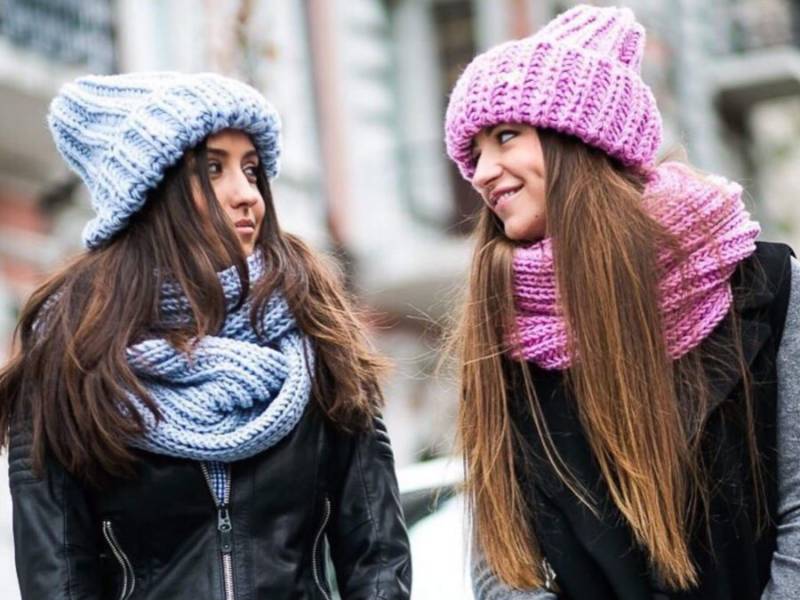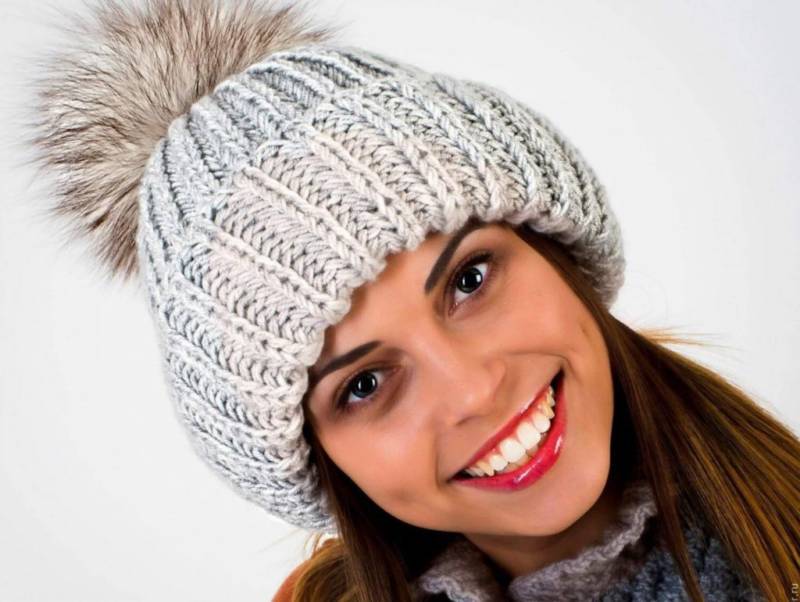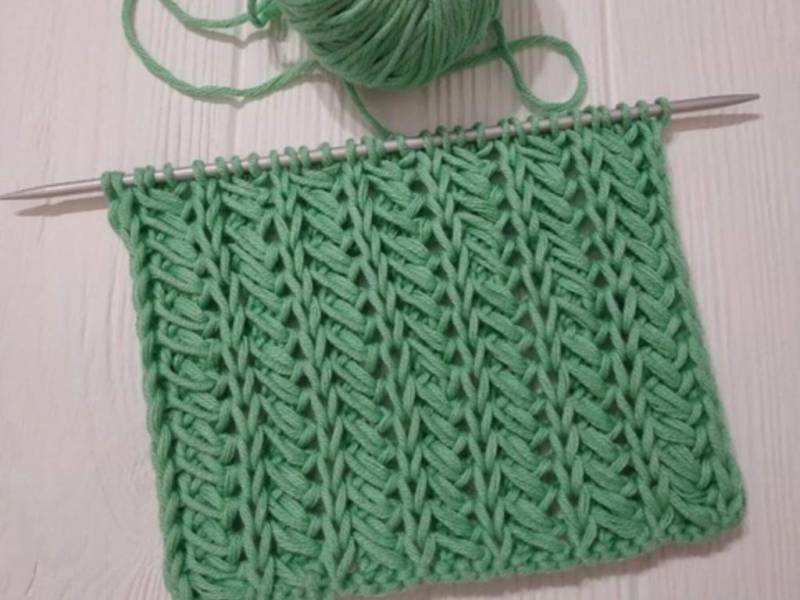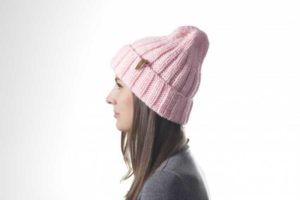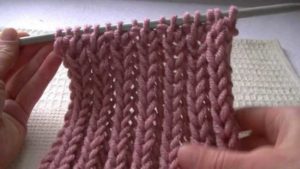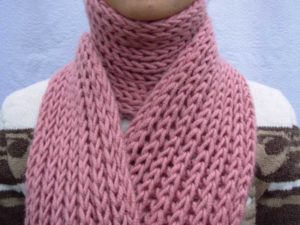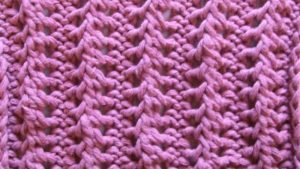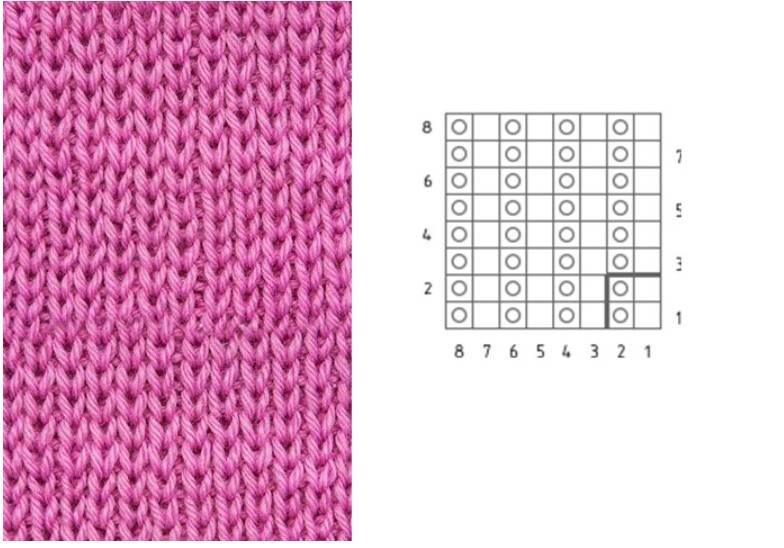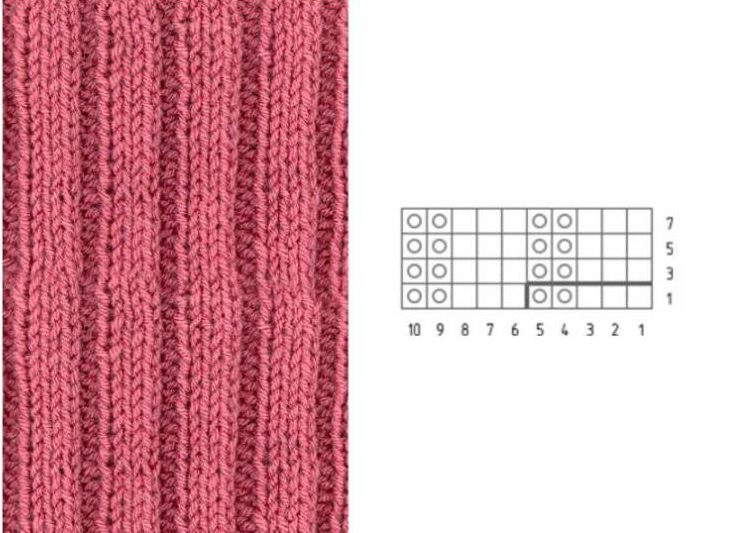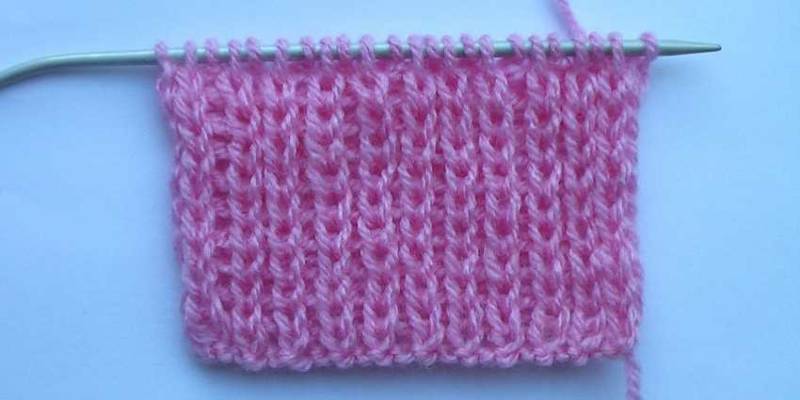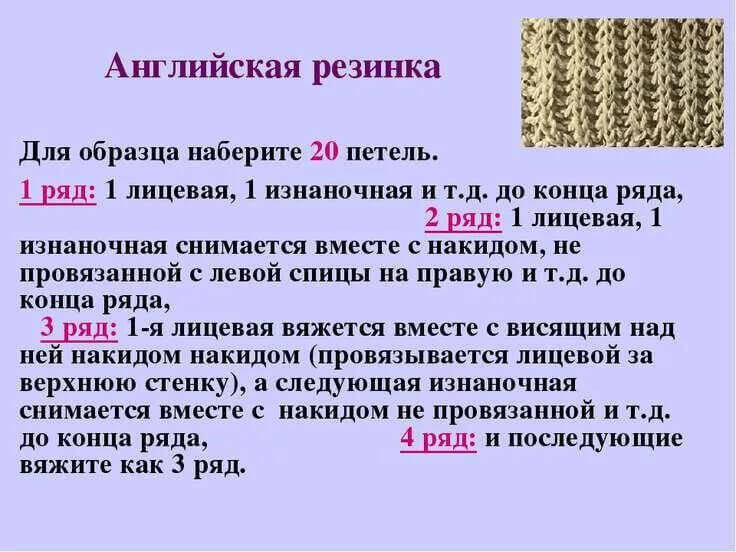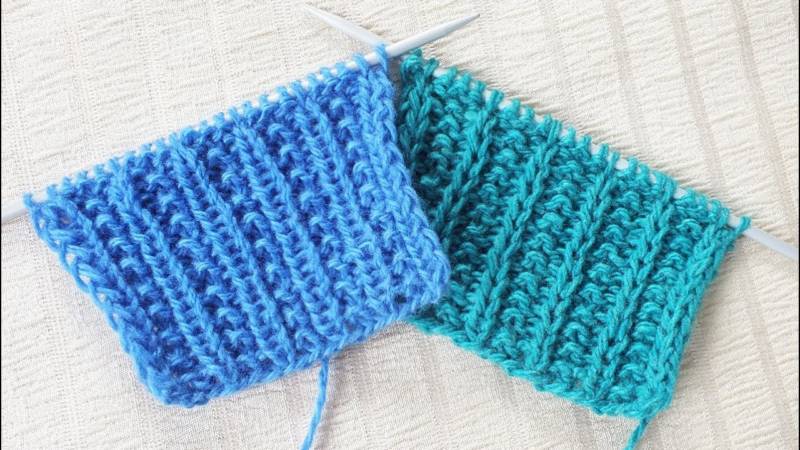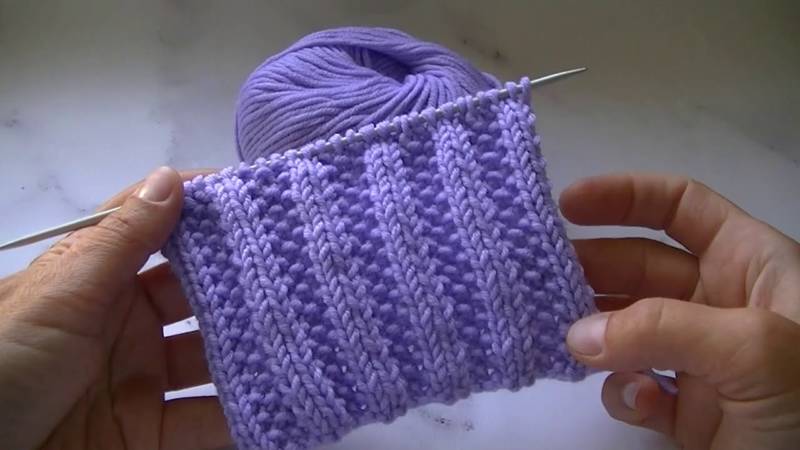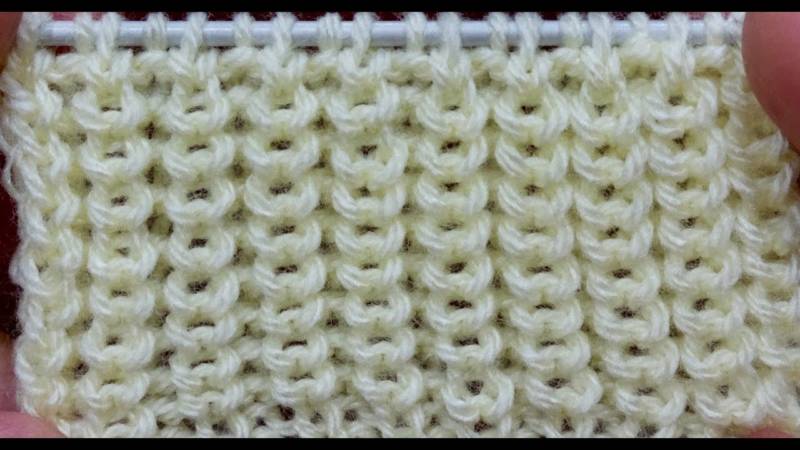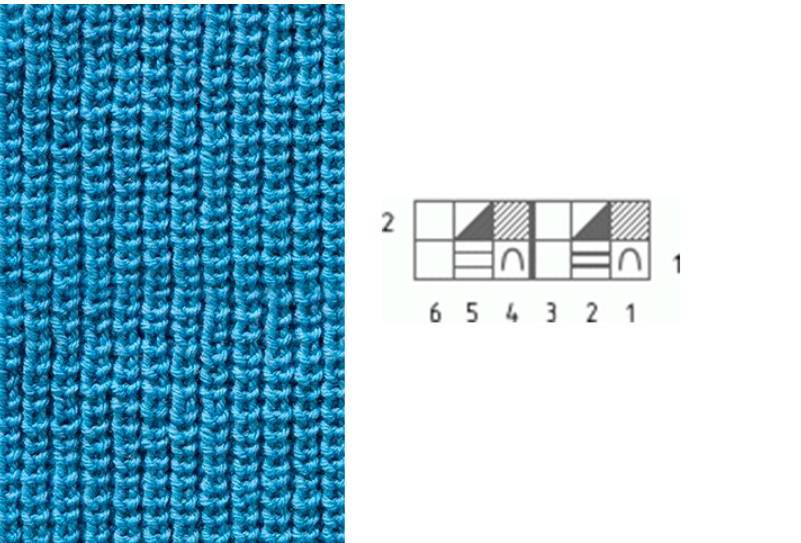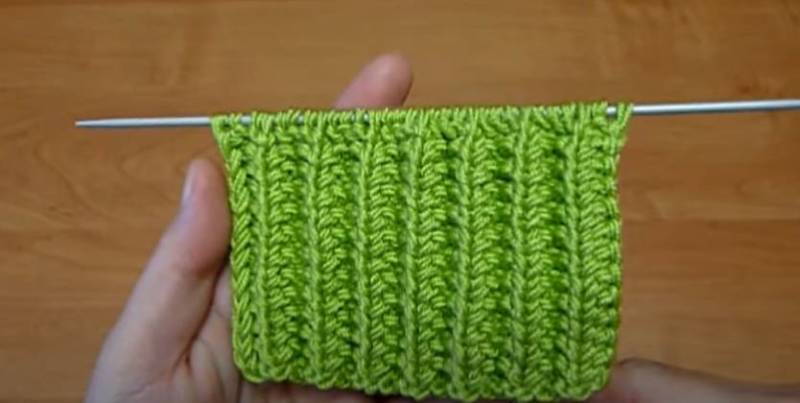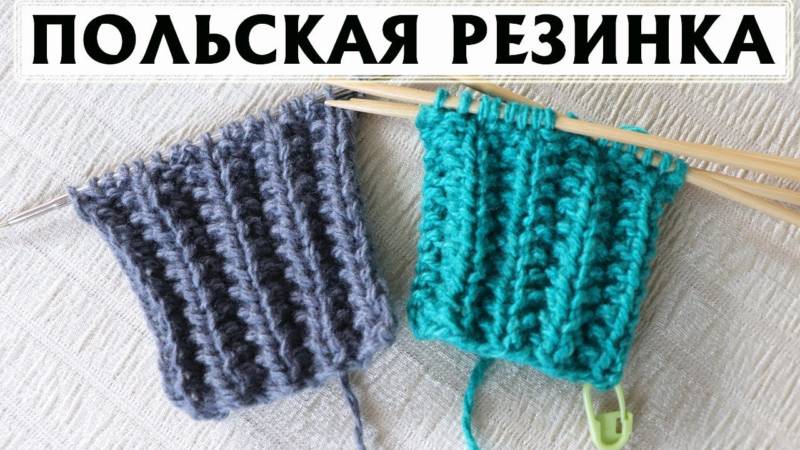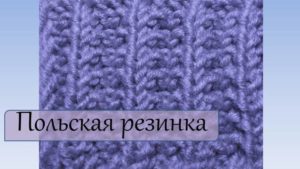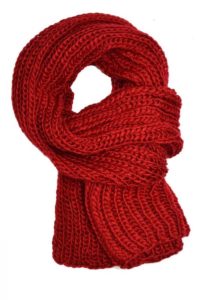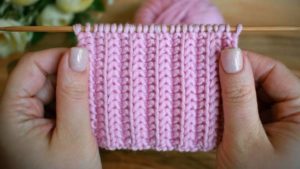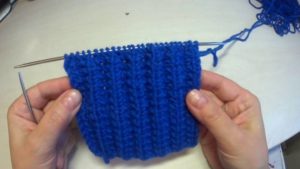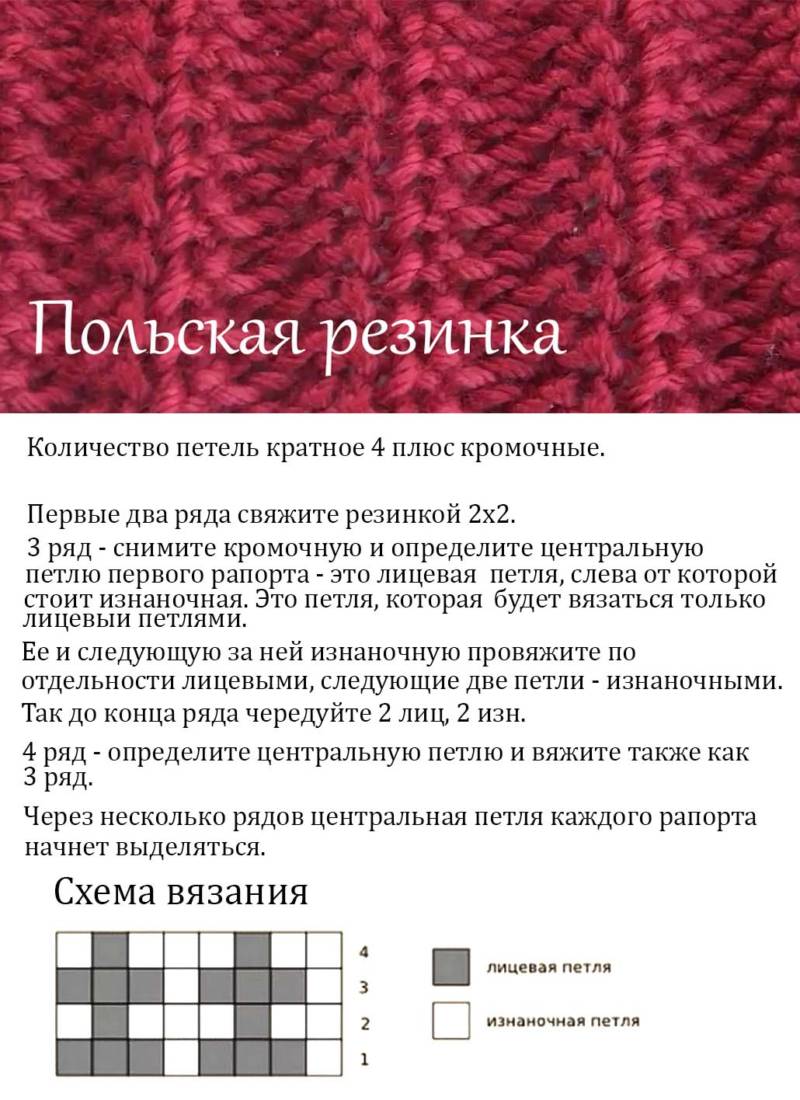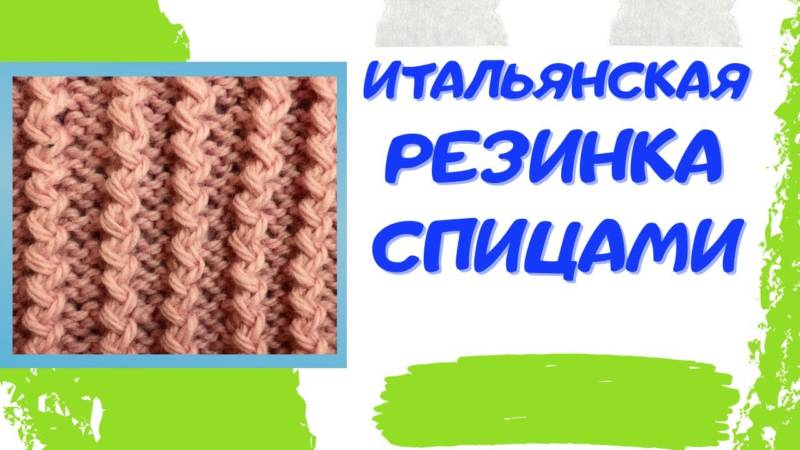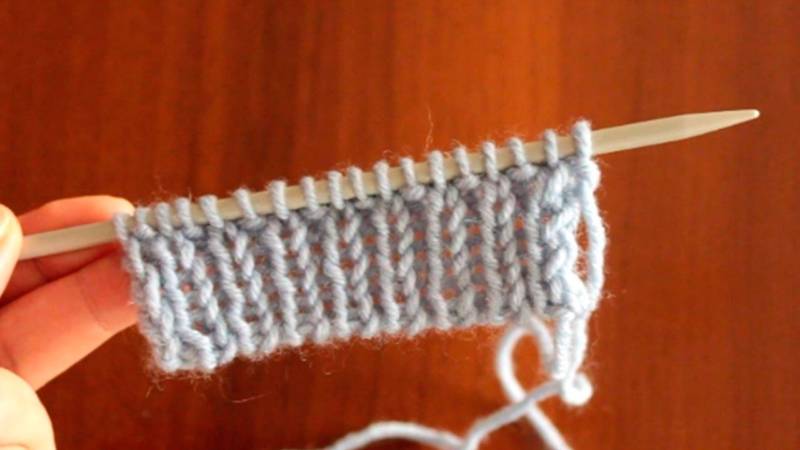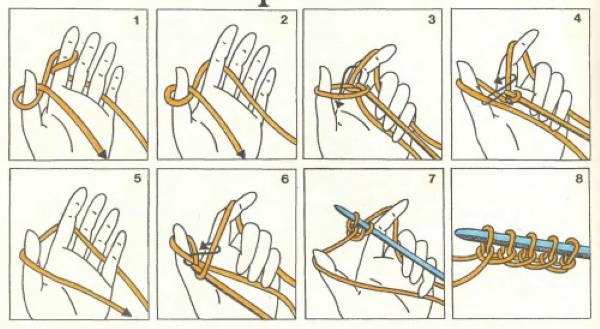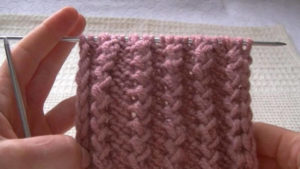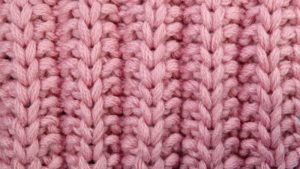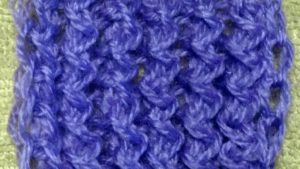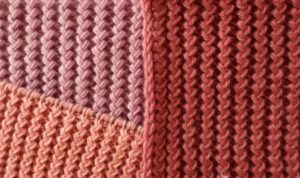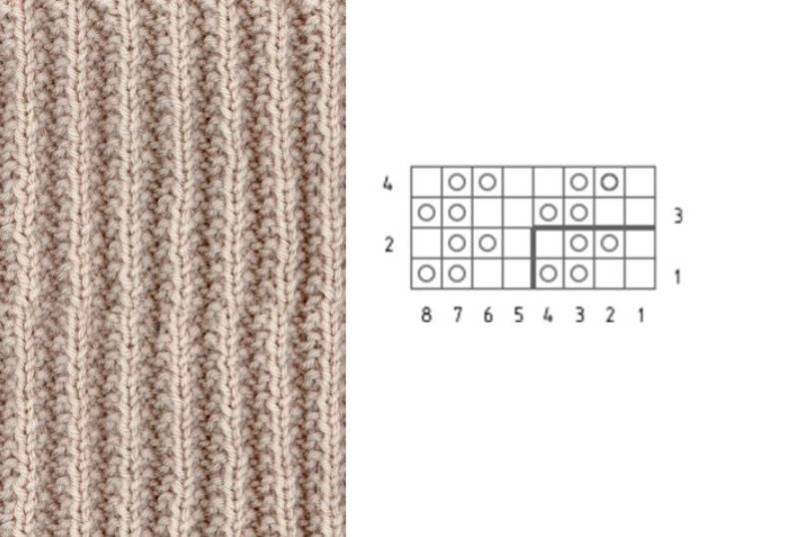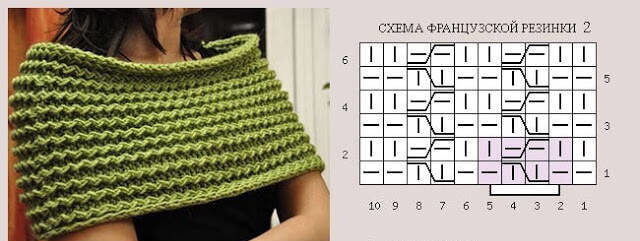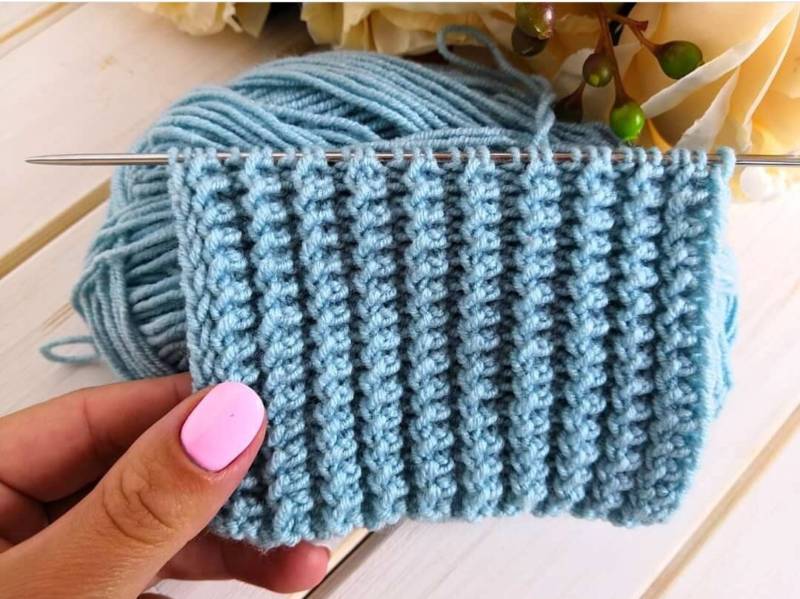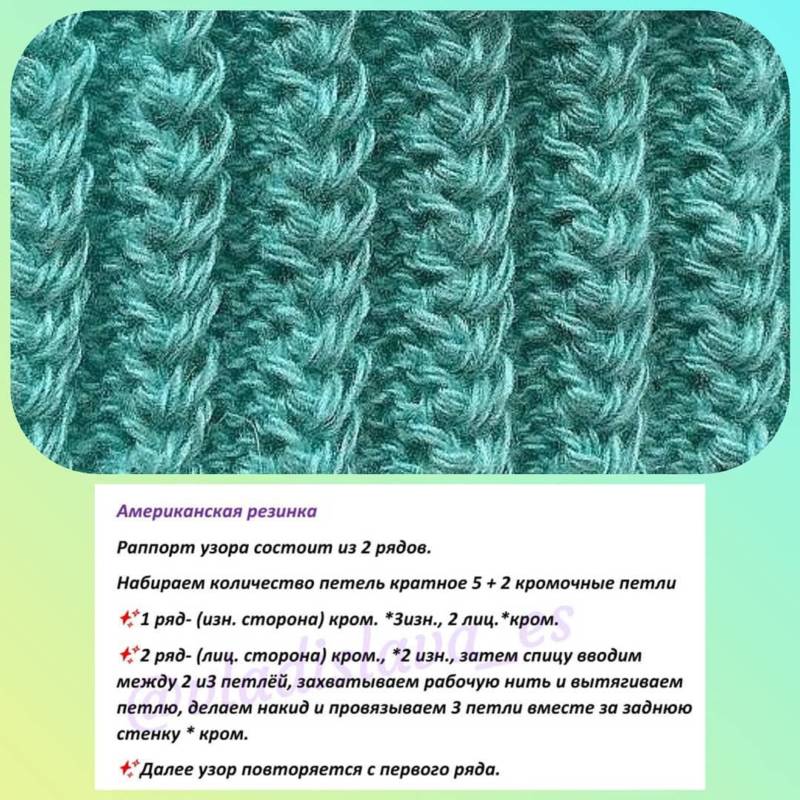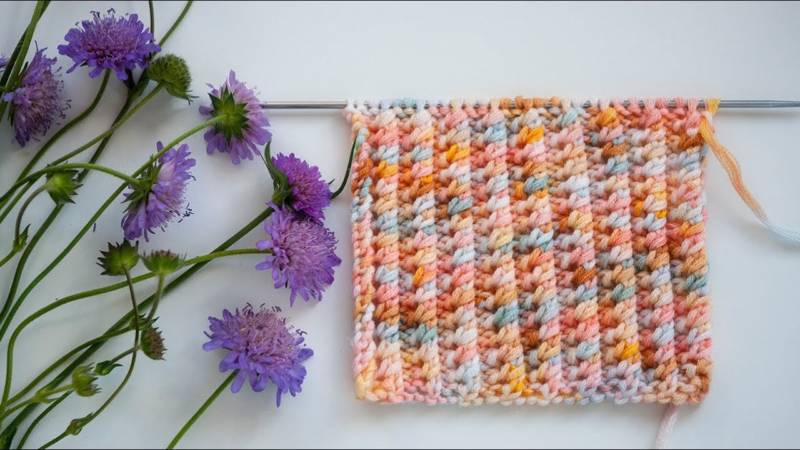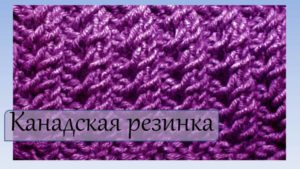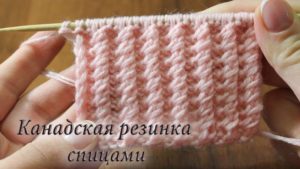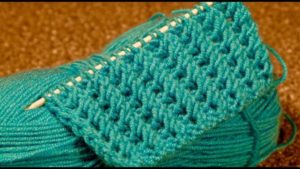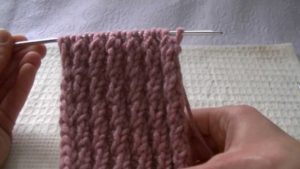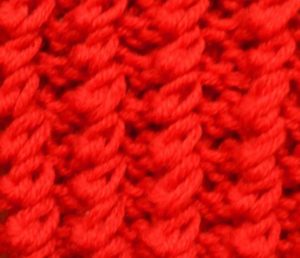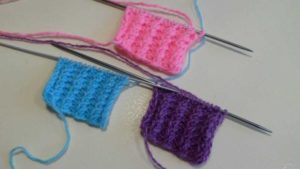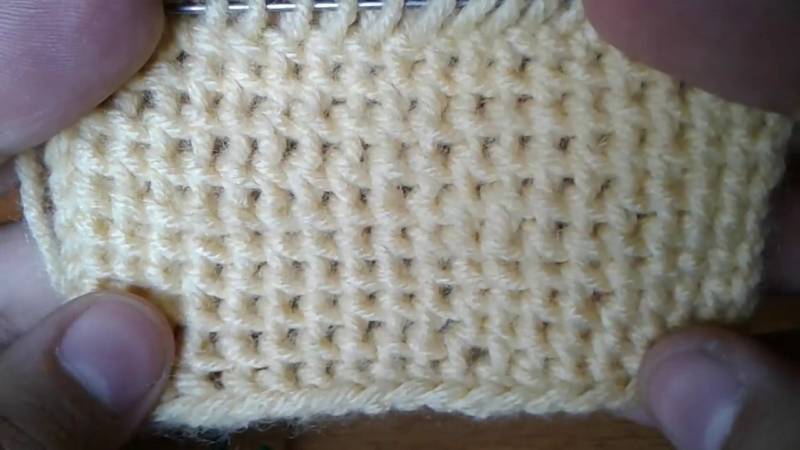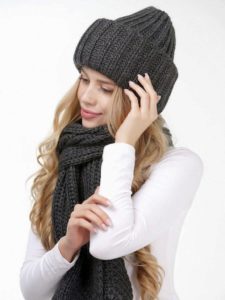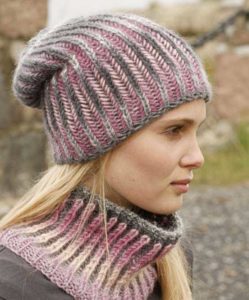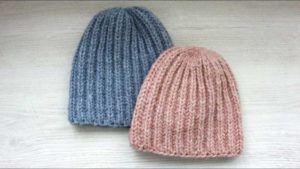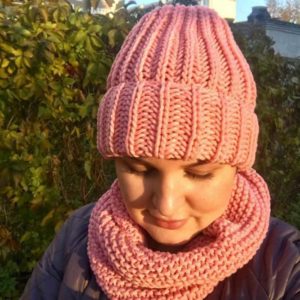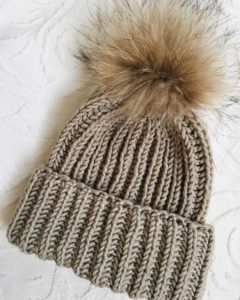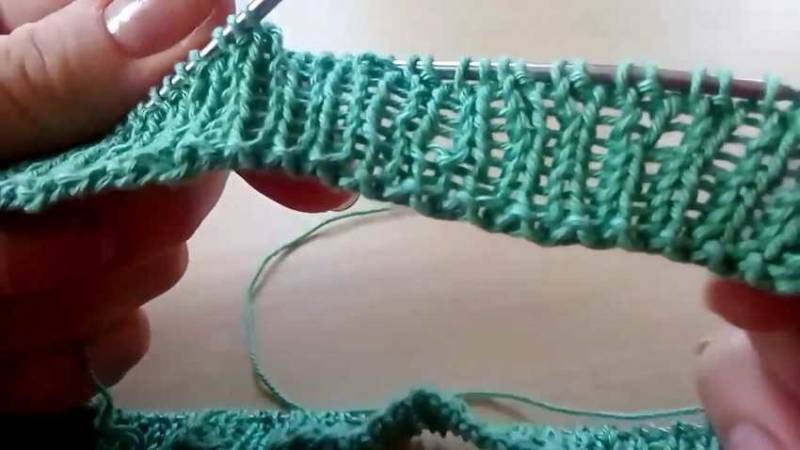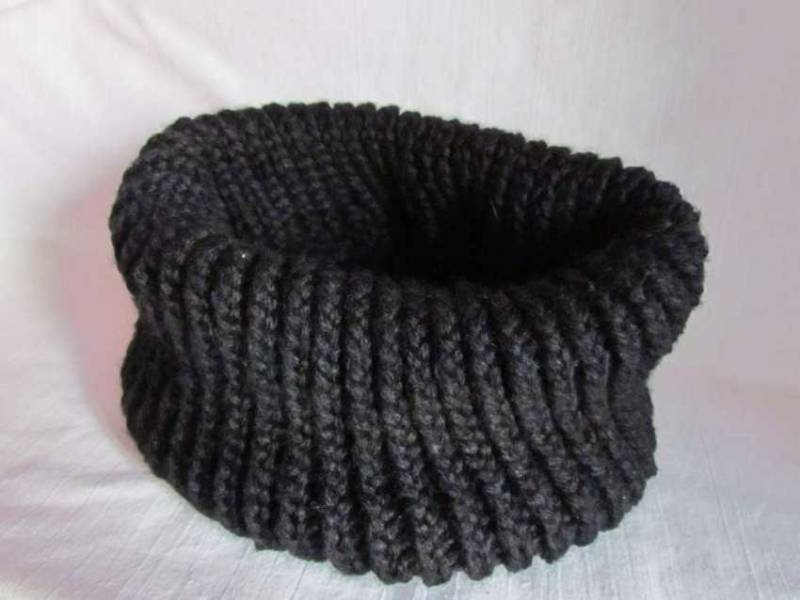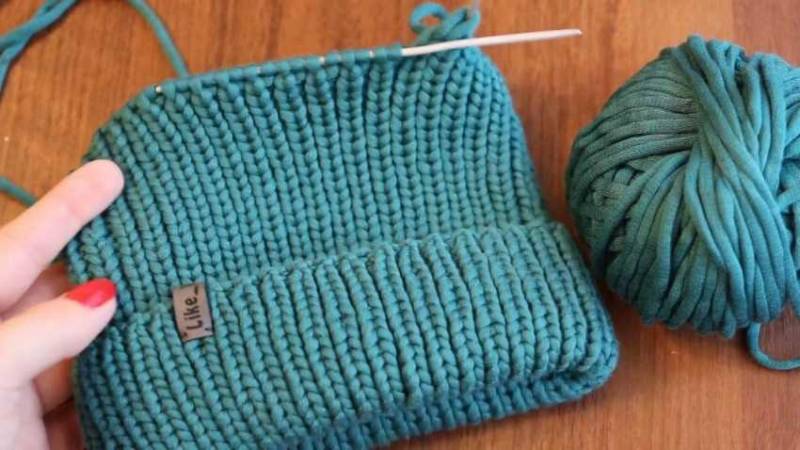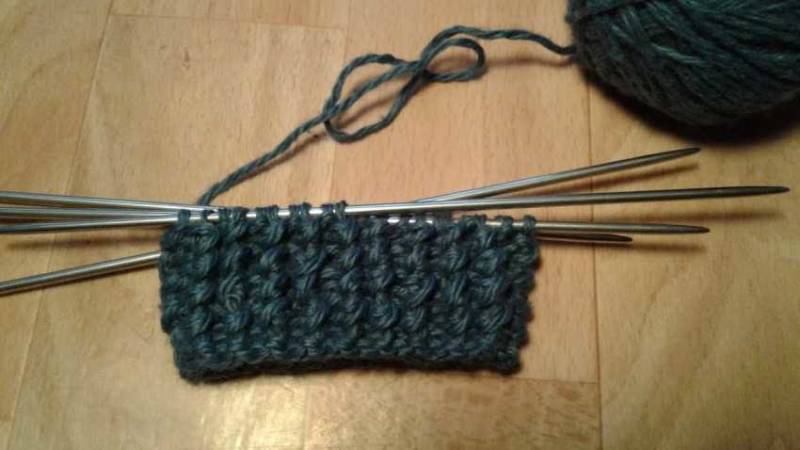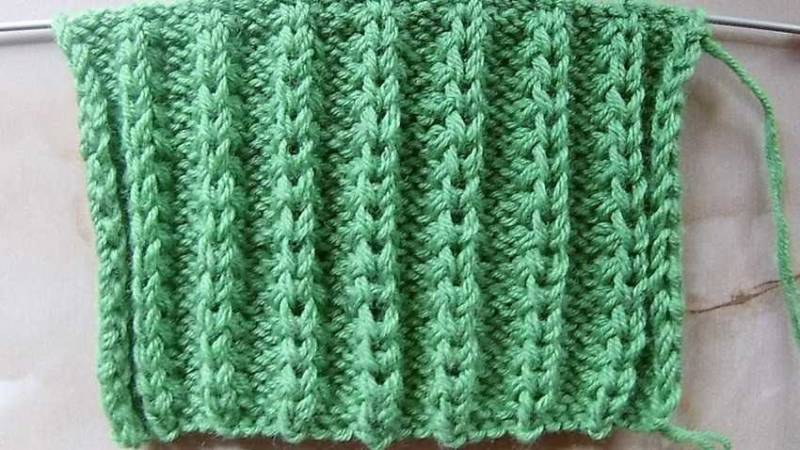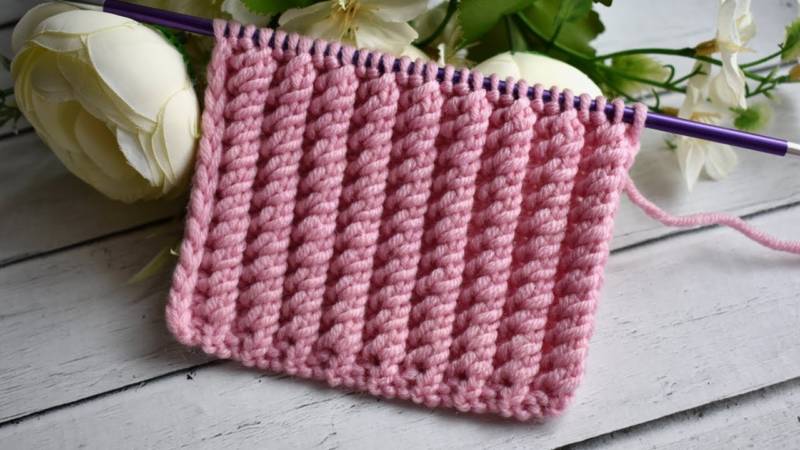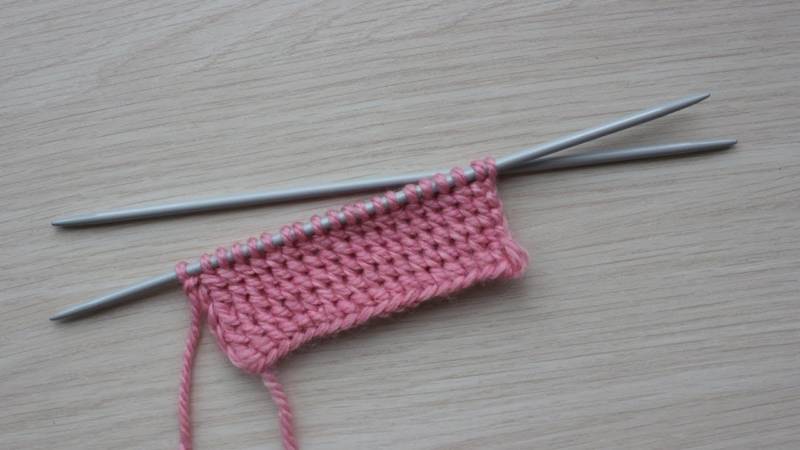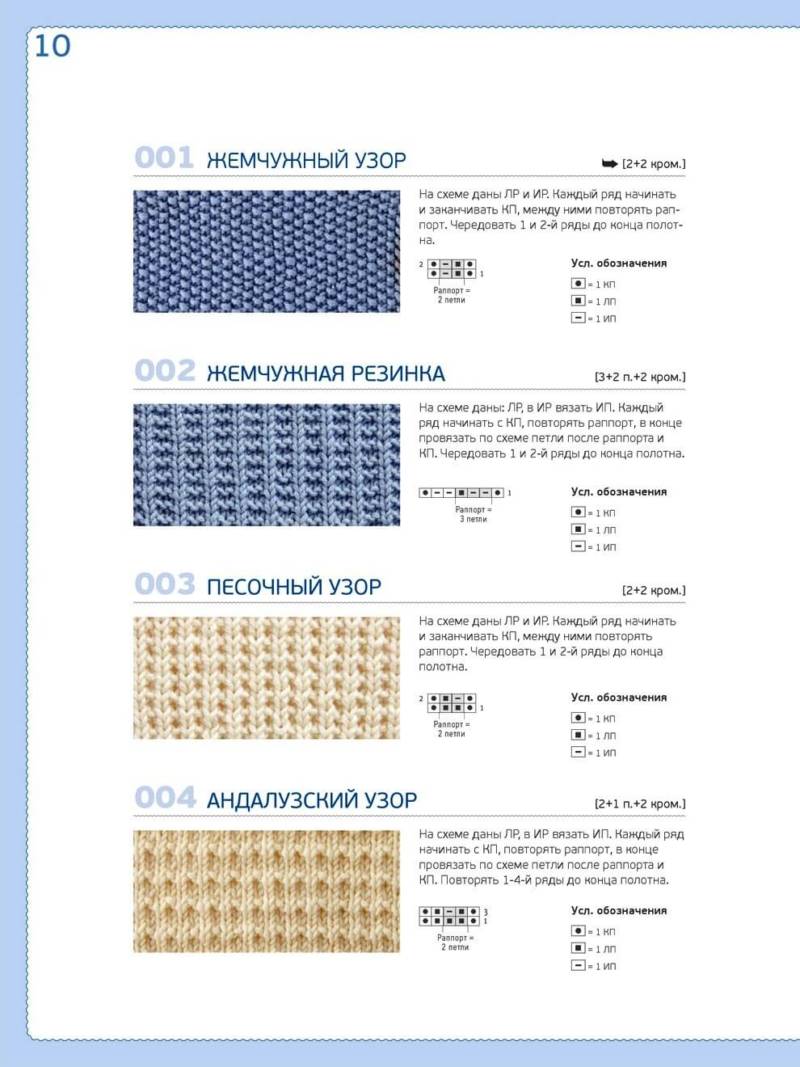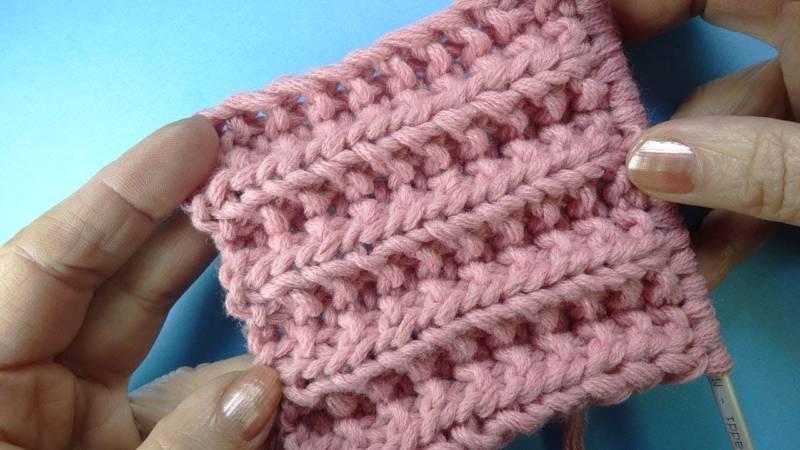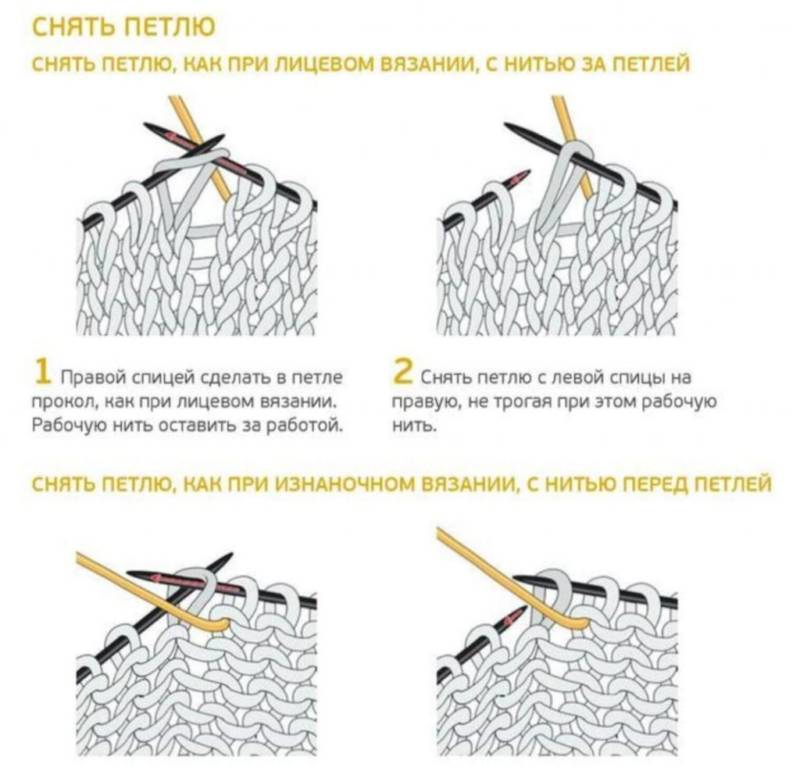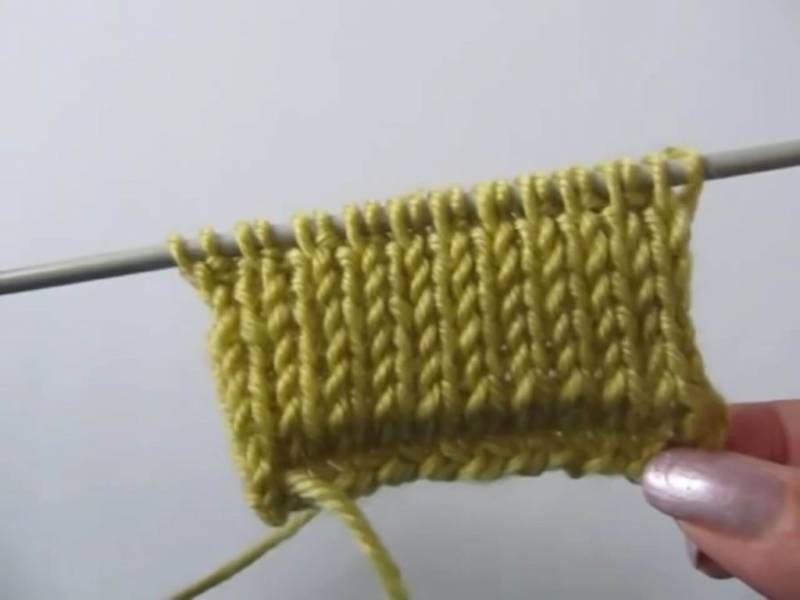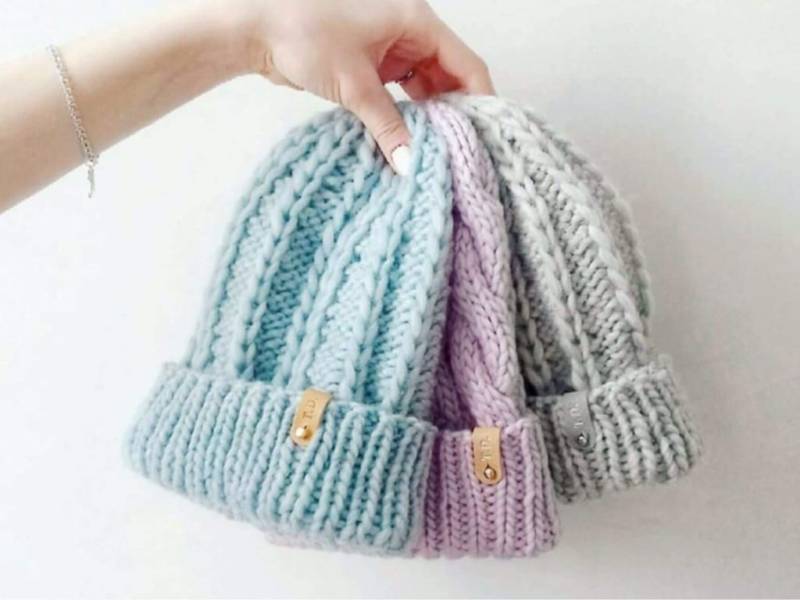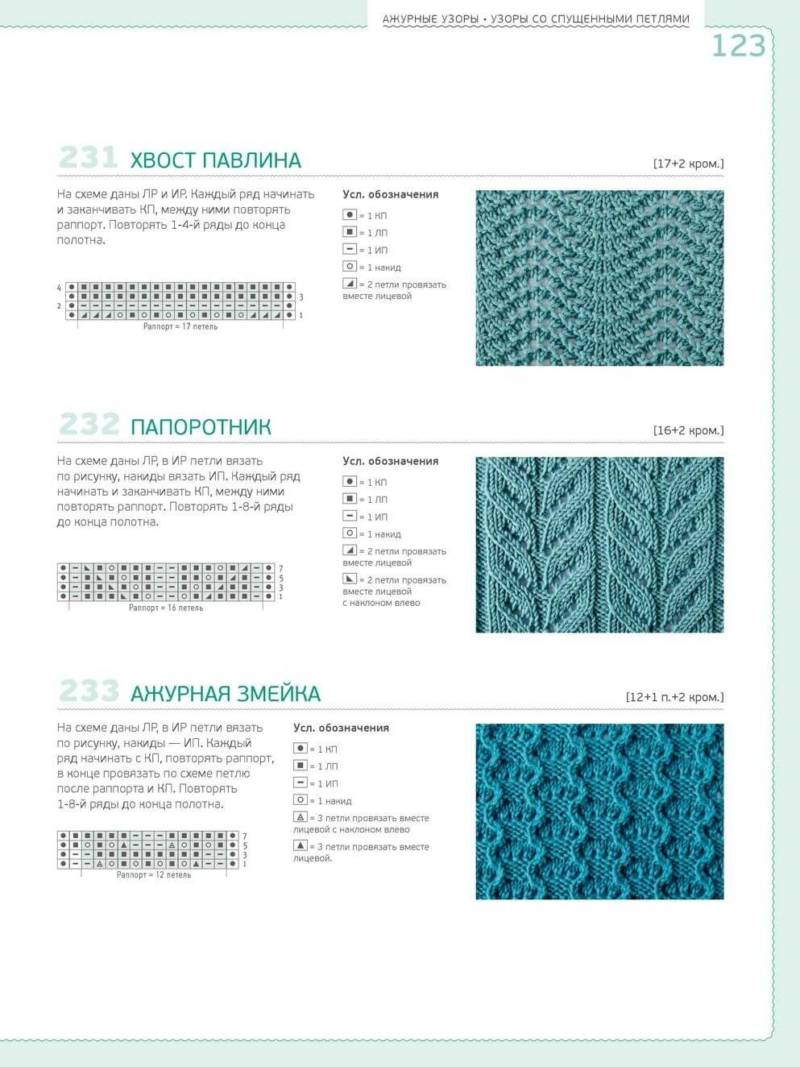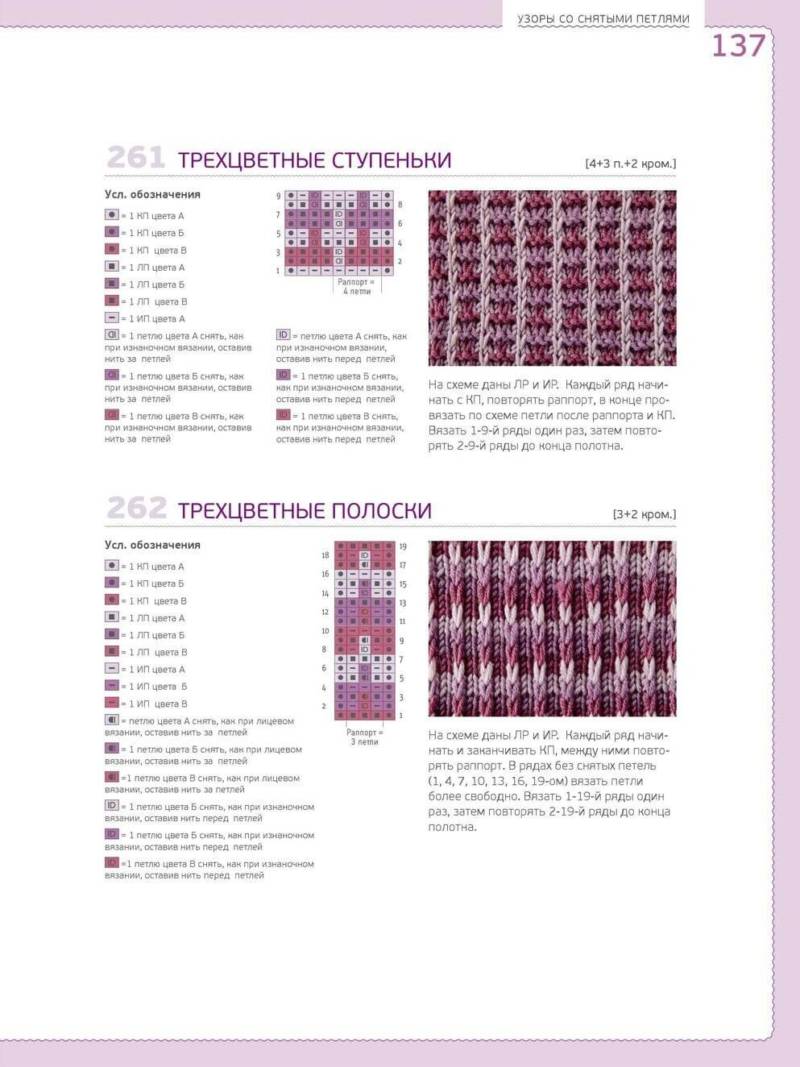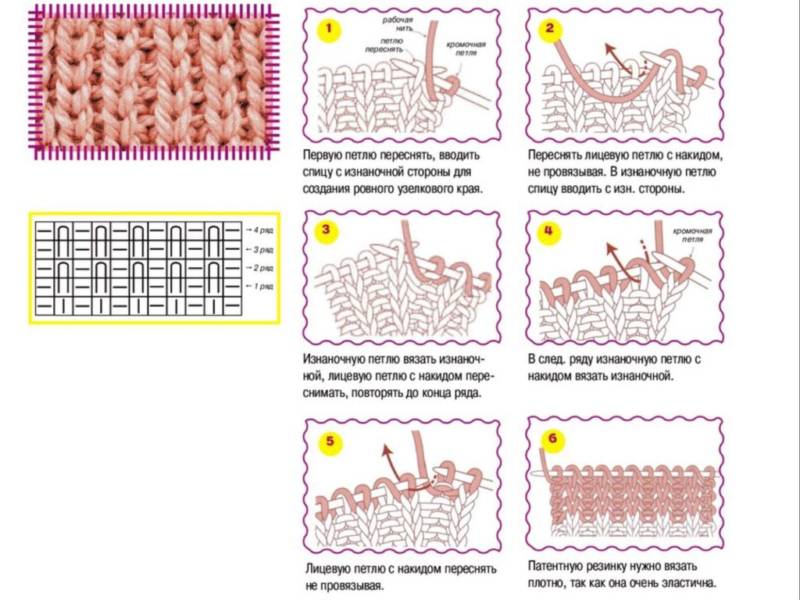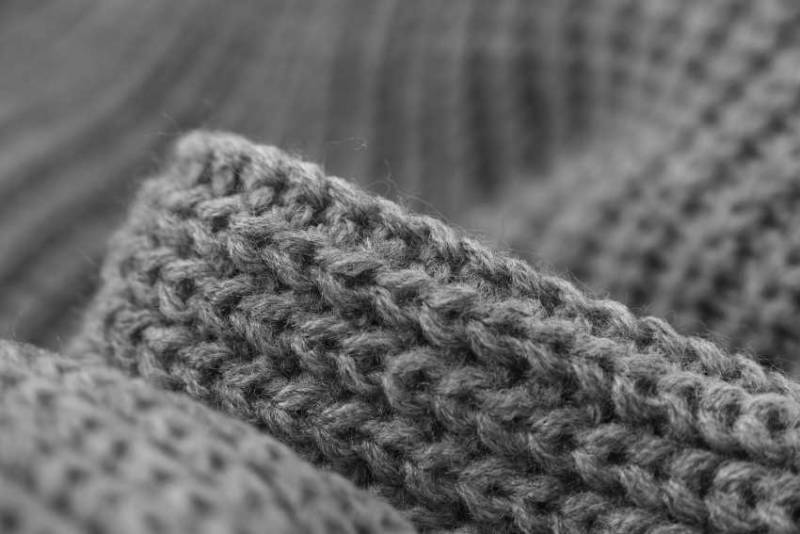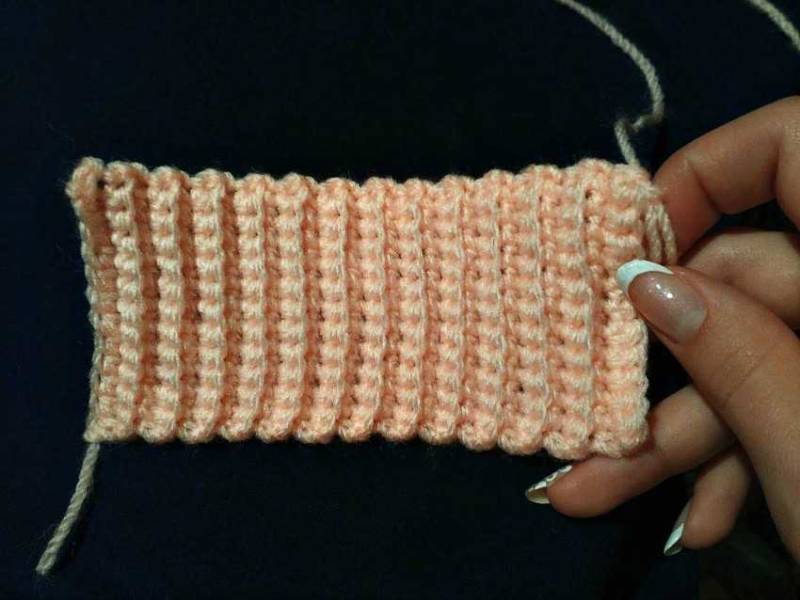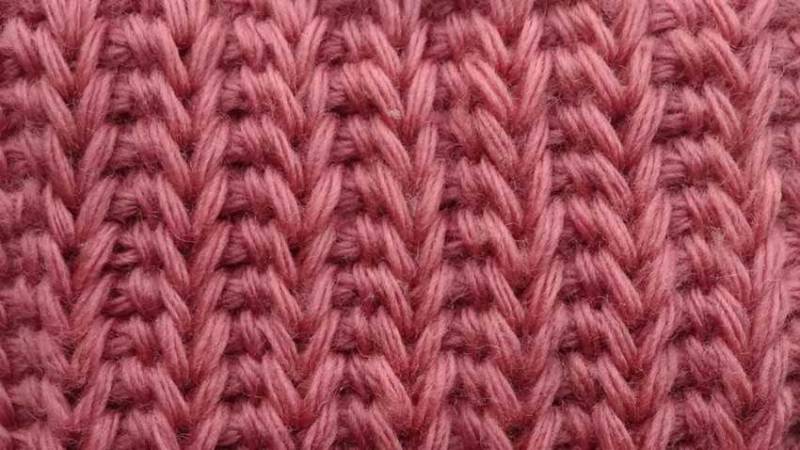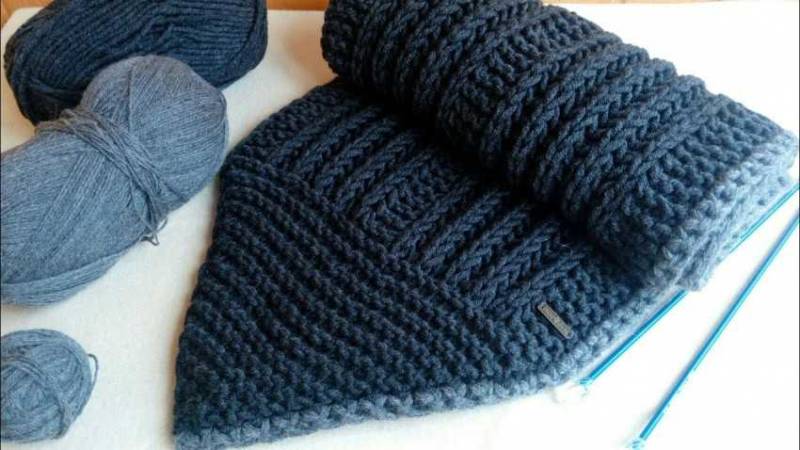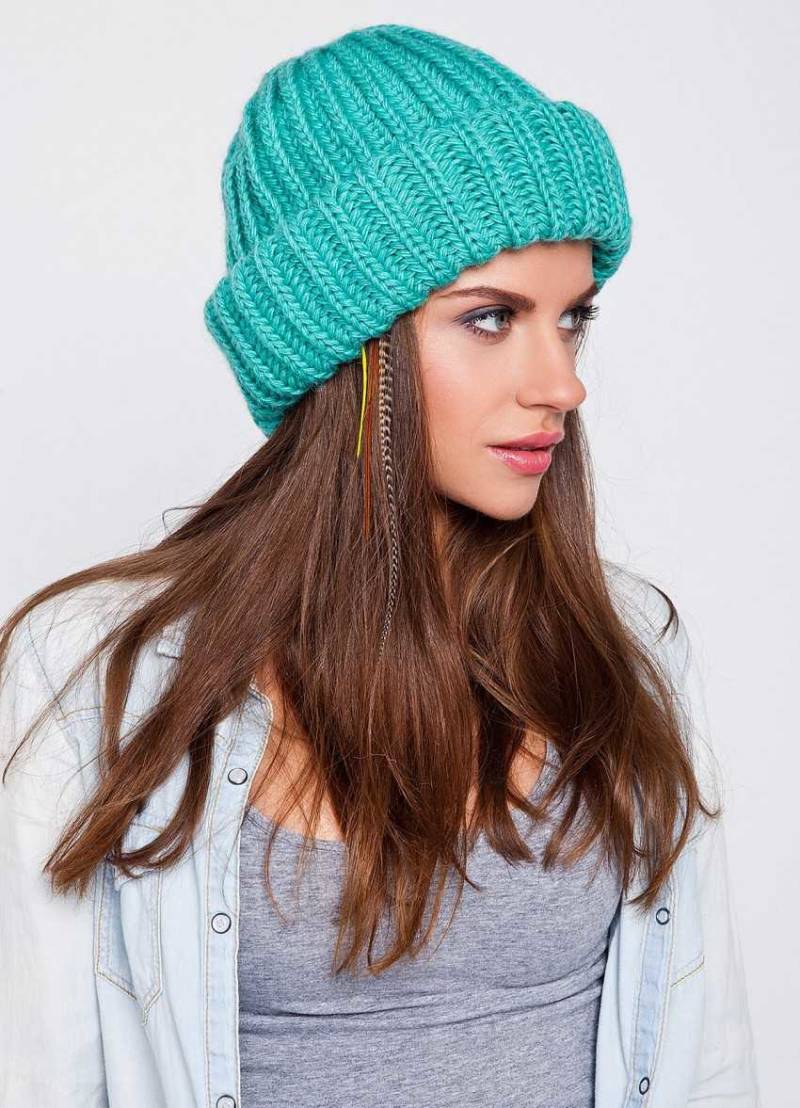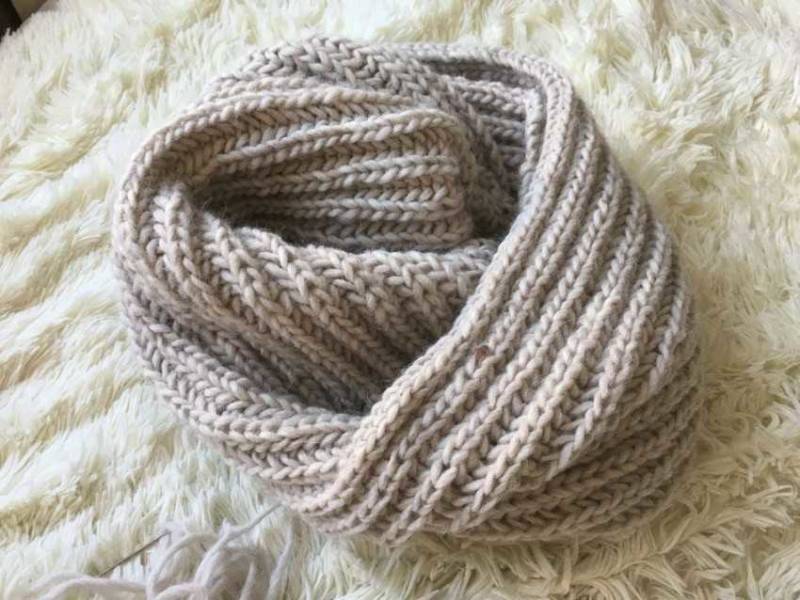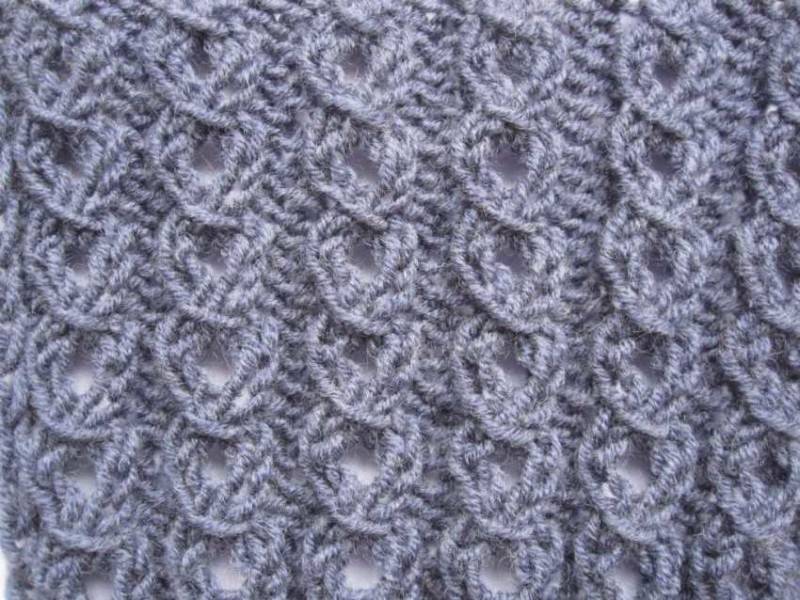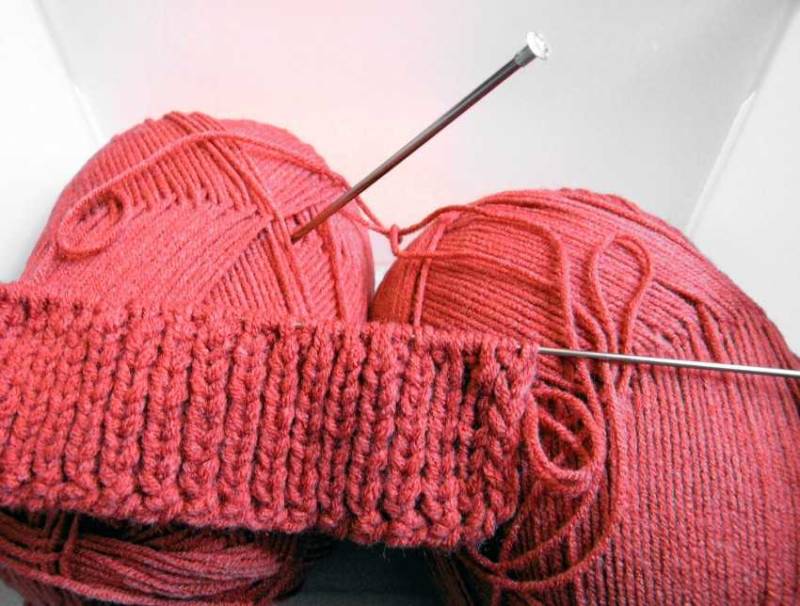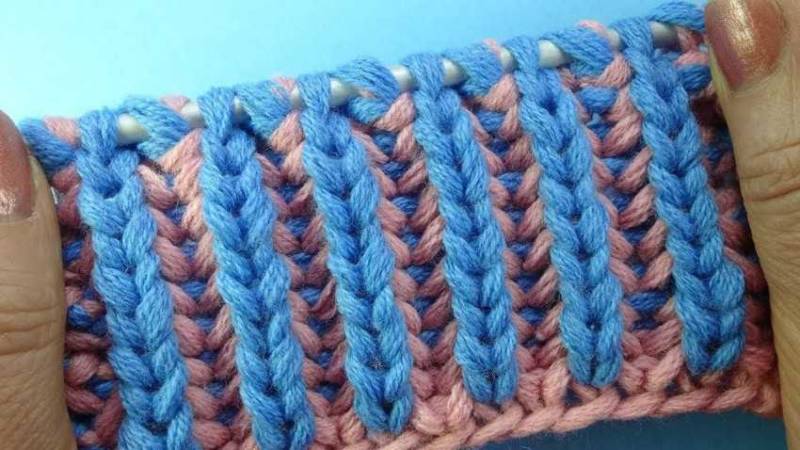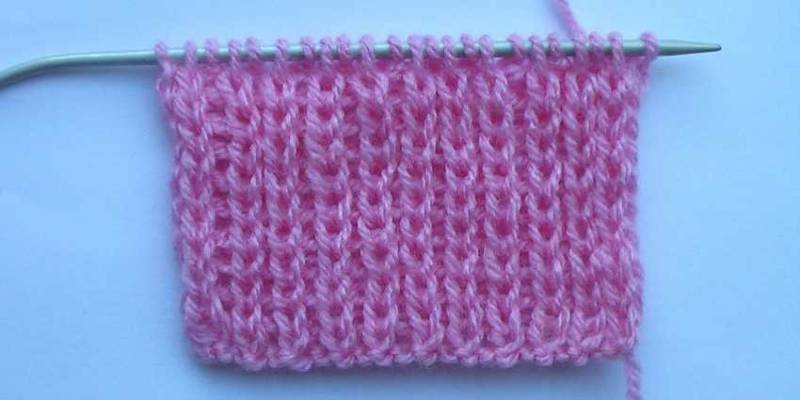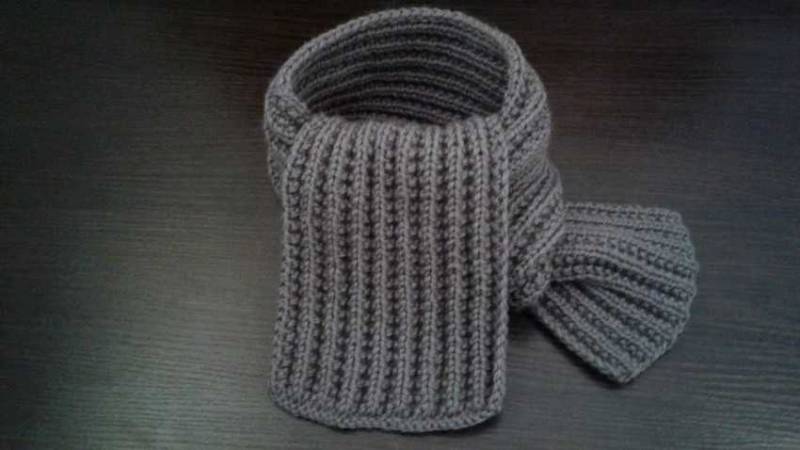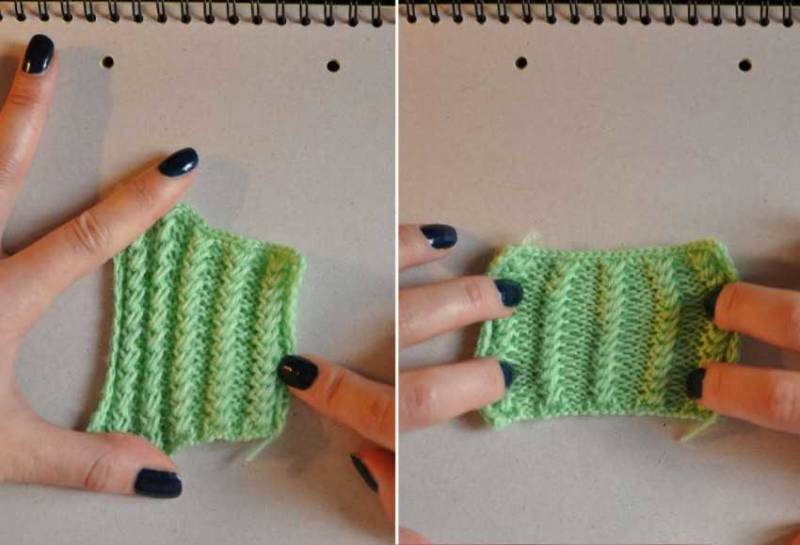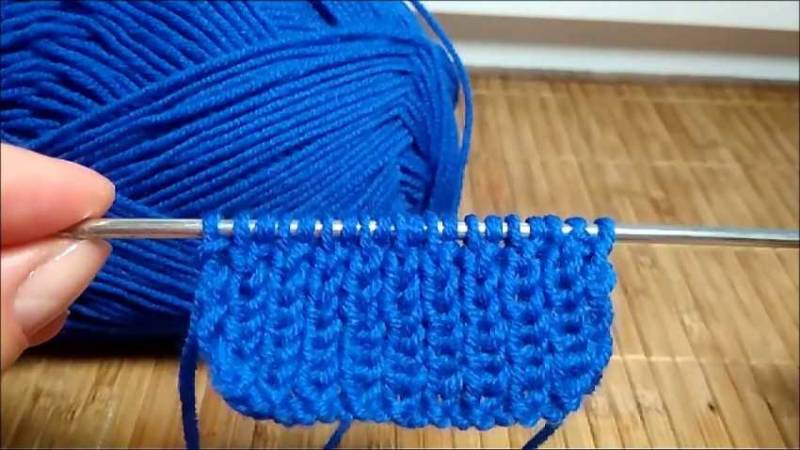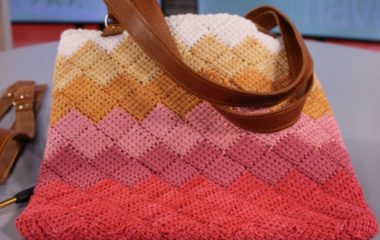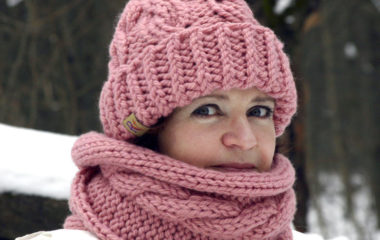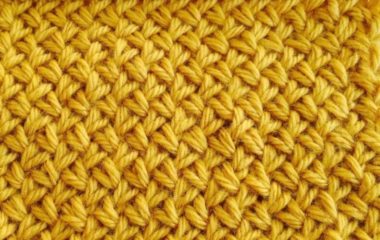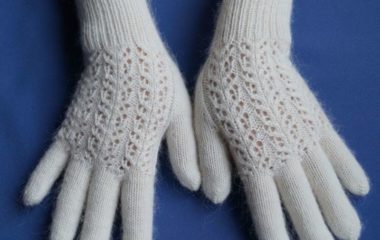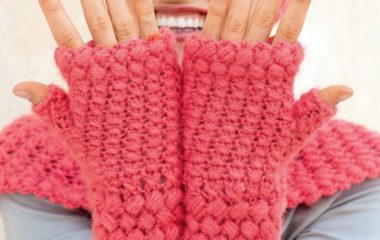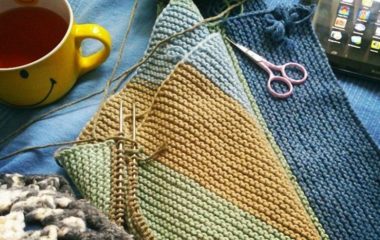Crocheted elastic bands - diagrams, descriptions for beginners, photo examples
Lovers of knitting are constantly in search of new unusual solutions to create their unique products.
For this purpose, needlewomen practice new schemes, learn special knitting techniques. Therefore, to help beginners and experienced knitters, here is a selection of different types of elastic bands, connected from yarn on needles.
Interesting! A rubber band is any elastic piece of knitting.
In practice, there are many different patterns of knitting rubber bands, every needlewoman can choose and learn the most suitable for herself scheme, depending on the intended product.
Plain rubber band
On the basis of a simple, regular rubber band other patterns are constructed.
The pattern of this knitting is very simple in execution, as created by alternating the front and back loops, and on the wrong side the alternation changes: 1 true, 1 loop on the right side.
This is the easiest pattern to use for beginner knitters.
Patent or English rubber band.
This is a classic one-on-one rubber stitch, it looks the same on both sides. It has loose and deep grooves and is also called a fluffy rubber band. The number of stitches must always be even.
The first and the last stitches are the edge stitches.
Knitting method:
- 1 right stitch, the next stitch is left uncommitted and taken off the front wall together with an overhand stitch, then 1 right stitch again. Then the fabric is reversed.
- On the reverse side of the pattern is knitted as follows: 2 stitches together behind the front wall with a hook, the next stitch is a left stitch - it is not knit, but taken off with a hook, and so on.
Pearl or semi-English rubber band
It has 2 different sides: the first is convex, the second resembles the classic English rubber band pattern. But, in comparison, the pearl gum looks thinner, which provides a lower consumption of yarn.
Rapport of such a rubber band also consists of 2 rows. The number of loops is even.
A word of advice! The perpendicular pattern is a repeating fragment of knitting, which results in a knitted fabric with a certain pattern. The pattern is made up of the number of stitches in a row and the number of rows. Which loops and how they should be knitted in the pattern are indicated by special symbols. All these elements are indicated on the knitting diagram.
The way to knit a pearl stitch:
- The edge stitch is removed. Next, the stitch is knit in the front stitch, and the next stitch is taken off behind the front wall with a backslash. Then the alternation is repeated until the end of the row. The last stitch is the edge stitch.
- On the reverse side: first, the cropped stitch is taken off, after 2 stitches are cut in the front wall by the right side, then the back stitch is cut without a stitch, and so on until the end of the row. The last stitch is the cut-off stitch and is to be left unto the wrong side.
False English gum.
This is a double-sided rubber band, the same on both sides. It is very simple to knit, but has its own characteristics when knitting.
The rhapsody of this rubber band is two rows, four loops, so the loops should be dialed in multiples of 4, plus 2 cropped loops:
- The edge stitch is removed. The next stitches are 2 right stitches and 2 wrong stitches. And so on to the end of the row. The last stitches of the end of the row are tied on the wrong side of the stitch. Then the fabric is reversed.
- The next even-numbered row is also done with 2 right stitches, 2 left stitches, and 2 wrong stitches. But the peculiarity of knitting is that in even-numbered rows the outermost loops on both sides, which stand next to the croppers, are always knit on the wrong side. To avoid confusion over the even number of rows, you should focus on the "tail" of the product: if it is on the left, then the row is even.
Polish gum
Such an elastic band is not too thick, it is soft and holds its shape well. The resin pattern looks the same on both sides.
Set the number of loops should be a multiple of 4, and in addition 2 edge stitches. Rapport - 2 rows, 4 stitches.
Knitting method:
- The first, odd row. As usual, take off the edge stitch, then 1 wrong stitch, the next 3 stitches are knitted in the right way. When you knit the front loops, you must take into account the knitting pattern, depending on which will determine whether to knit the loop behind the back or the front wall. The last stitch - the edge stitch is knitted on the wrong side. The canvas is inverted.
- The second row and all the even ones. Removed cropped stitch. Next, 1 front stitch, then 1 back stitch. Then repeats: 3 stitches are knitted in the front way, 1 is a back stitch. Don't forget that the middle loop of the three right-handed stitches is tied behind the back, you can see it in the knitting pattern. And so the even and odd rows are repeated.
Ornamental elastic bands
Italian rubber band
It looks very graceful and airy. It has a one-sided look.
Rapport, as in many other ways of knitting - 2 rows, 4 loops, therefore, the number of loops to be gained is divisible by 4, plus 2 edge loops.
Knitting method:
- The edge stitch is thrown onto the other needle. Next, 2 left stitches and 2 right stitches are knitted in the wrong way. The front and back stitches are tied behind the front wall. The last stitch is the wrong stitch.
- The second row and all the even ones. The back wall of the second stitch is left to the right, then the front wall of the first stitch is left to the right. Followed by 2 loops on the wrong side of the first stitch. Then again, 2 left-handed cross stitches, as above. The last edge stitch is the wrong way round. Then the pattern is repeated.
French Rim Stitch
This is a very beautiful rubber band with a voluminous pattern. The knitting is one-sided.
The rapport is 2 rows, the number of loops is a multiple of 3, plus 1 loop for symmetry, plus 2 edge loops.
Knitting method:
- First row and all odd-numbered rows. 1 stitch - the edge is removed. The next stitch is knit in the wrong way. The next 2 stitches are knitted in the backstitch, starting with 2 stitches, and then knit again in the backstitch and so on to the end. The knitting is reversed.
- The second row and all subsequent even stitches. 1 stitches are removed. The second stitch is a backstitch. Next, put the thread on the left needle, it should be in front of the work, 2 stitches are tied in the wrong way, starting from the second stitch. The next stitch is a front stitch, and so on according to the repeat.
American rubber band
Knitting method:
The American rubber band is very elastic, voluminous, its pattern resembles a honeycomb. Knit double-sided.
RAPPORT of the pattern - 2 rows, 3 stitches, plus 2 end pieces. Consequently, the number of stitches must be a multiple of 3, plus 2 edge stitches:
- The first row and all odd ones are knit in the same way. The edge stitches are removed, and then the 2 front stitches and the 1 back stitch are sewn. The last edge stitch is the wrong way round. Knitting is reversed.
- The second and subsequent even-numbered rows. Cropped stitch is removed. The back button, then the back button, and then the front button and 2 more stitches in the front of the knitting needle. Next, the right needle grabs the previous sock, and through it are pulled two stitches, which were knitted in the right way. Then everything repeats from the beginning to the end of the row. The last stitch, the cropped stitch, is tied on the wrong side.
Canadian rubber band
This rubber band is very openwork, elastic, good stretch and restores its shape. The repeat of the rubber band is in 2 rows, 4 loops plus 2 edge loops. So the sum of the set loops is a multiple of 3.
Knitting method:
- The first row is 1 front stitch behind the front wall, after that, 2 back stitches. Crotch stitches: the first one is removed, the last one is knitted with a back stitch. The canvas is turned over.
- The second row: is performed according to the location of the loops. That is, 2 front for the back, 1 stitches on the wrong side. Border loops: the first is removed, the last is knit with the wrong stitch. Knitting is reversed.
- The third row and all subsequent odd stitches. Cropped stitches are taken off on the right hand. Next, a back stitch is cut behind the back wall, and then another back stitch and two back stitches are cut from the back stitch. This is repeated until the end of the row. The last stitch is the cut-off stitch, which is to be done in the wrong way.
- The fourth row and all subsequent even rows. Cropped stitch is removed on the other needle. 2 back-to-back straight stitches. Then 2 stitches: one from the broach, the second - the wrong side, are connected together in the wrong way, etc. The last stitch is the wrong stitch. The canvas is turned, and then the third and fourth rows are repeated.
Ethiopian elastic band
Picture of this rubber band is very interesting: on the front side the fabric has a cellular structure. The knitting is one-sided, dense. The rhapsody of the rubber band is 2 rows.
Knitting method:
- The first row and all odd ones, this will be the wrong side of the fabric. Take off the first stitch. Then a hook is made, first a needle goes to the right, then to the left, the next stitch from the left needle is removed without tying, everything is repeated until the end of the row. The last stitch is the wrong side, the back stitch is not stitched in front of it. Knitting is reversed.
- The second row and then all the even, it will be the right side of the fabric. Cropped stitch is removed to the right hand. Next comes the loop with a hook, which is knit on the front side of the front wall together with the hook. This way the knitting continues until the end of the row. The last stitch is on the wrong side.
Here is a huge selection of rubber band patterns, they are usually used to knit hats, scarves and snoods.
An experienced needlewoman will be able to find a suitable option for herself to create different products from the yarn. Openwork, decorative elastic bands are suitable not only for knitting hats and scarves, but also for sweaters, pullovers and dresses.

